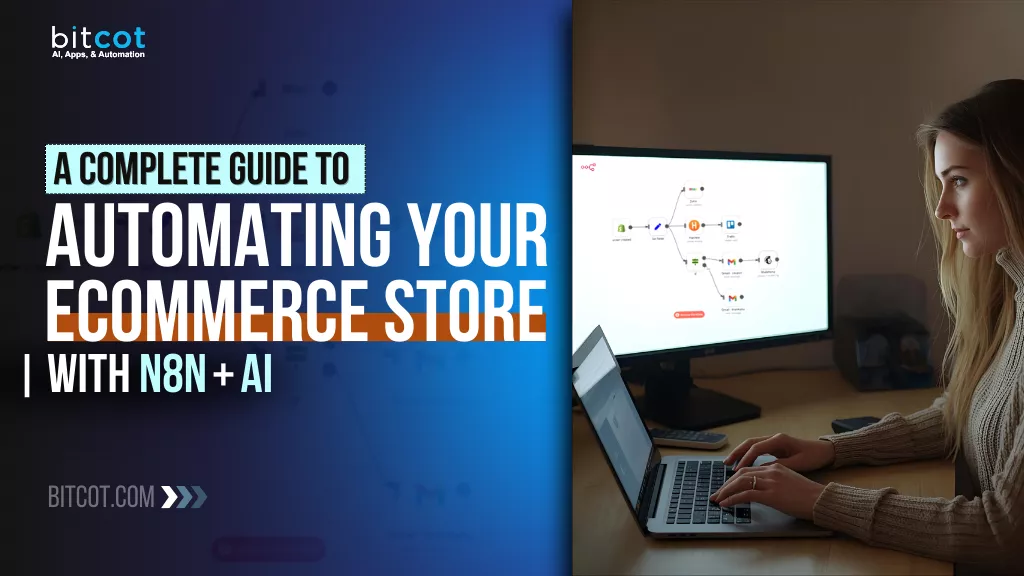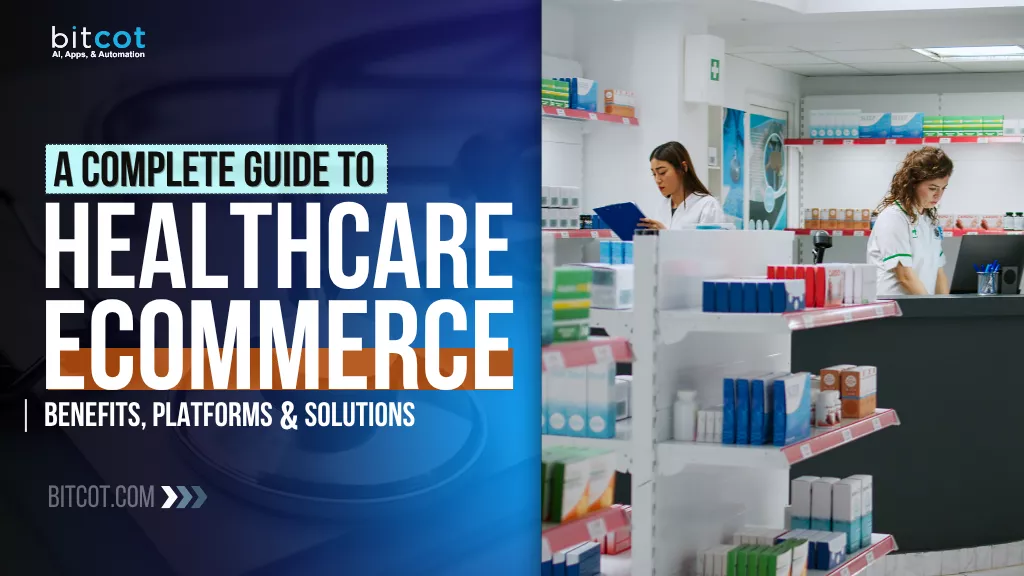
The $847 Million Problem Alaska Retailers Face (And How to Solve It)
Alaska retailers are leaving money on the table. A recent analysis of Alaska-based eCommerce operations revealed that 73% of businesses use outdated or template-based commerce platforms.
The national average shopping cart abandonment rate stands at 70.19% in 2025. These retail technology gaps cost Alaska’s digital commerce sector millions annually in lost transactions and missed revenue growth.
Many Alaska business leaders have experienced the same frustration. Agencies promise innovation but deliver mediocre templates. Development teams focus on feature lists rather than conversion metrics. Commerce platforms cannot scale with growth. Integration nightmares trap operational data in silos.
For CEOs, CTOs, founders, and technical leaders navigating this landscape, the stakes are real. The right eCommerce development partner transforms digital commerce into a competitive advantage. The wrong vendor becomes a drag on growth, consuming resources, delaying platform launches, and missing market opportunities.
This guide cuts through the noise. It provides decision-makers with the framework, vendor profiles, and insights needed to make strategic partnership decisions in 2026.
Why Alaska Businesses Are Rethinking eCommerce Strategy Now
Alaska’s digital commerce environment has fundamentally shifted. What once seemed optional (a well-designed online store) is now table stakes for business survival and competitive positioning.
Modern shoppers expect three non-negotiable capabilities. First is speed, with web pages loading under 2 seconds. Second is a seamless mobile shopping experience, as over 70% of eCommerce traffic originates from mobile devices.
Third is AI-driven personalization with smart product recommendations. Alaska’s geographic isolation and pronounced seasonal demand patterns compound these requirements. Tourism-dependent commerce requires platforms that convert vacation visitors into repeat online customers and loyal repeat buyers.
Organizations implementing enterprise-grade eCommerce platforms report measurable improvements:
- 34% improvement in online conversion rates
- 47% increase in average order value (AOV) per transaction
- 52% improvement in customer lifetime value (CLV)
- 38% reduction in shopping cart abandonment
- 25-40% reduction in platform infrastructure costs through cloud optimization
For Alaska businesses competing regionally and nationally, these metrics represent the difference between sustainable growth and market stagnation.
How to Choose the Best eCommerce Development Partner: A Strategic Evaluation Framework
Vendor selection is overwhelming. Ten companies on this list alone. Hundreds more claiming expertise. How do decision-makers separate genuine capability from marketing noise?
Evaluate systematically across five dimensions:
1. Technical Architecture and True Scalability
Don’t accept vague promises about scalability. Ask specific questions:
- Does the platform use microservices or monolithic architecture?
- What’s the auto-scaling strategy under peak traffic?
- What’s the documented uptime SLA? (99.9% vs. 99.99% is a massive difference)
- How are you handling API rate limits across third-party integrations?
Why it matters: A platform that works for $1M revenue often breaks at $5M. Architecture built for scale prevents costly rebuilds.
2. Business Outcome Alignment, Not Feature Complexity
The vendor should speak your language. Talk about conversion rate, customer lifetime value, and operational efficiency, not just technology buzzwords.
Red flag: Vendors emphasizing how many features they can build.
Green flag: Vendors asking “What does success look like?” and “What’s your primary revenue bottleneck?”
3. Integration Depth Across Your Entire Stack
Modern commerce requires real-time data synchronization between multiple systems. Your eCommerce platform must connect to ERP and inventory management. Shopping carts need to work with payment processors and fraud detection. Order management flows to logistics partners and customer notification. Analytics systems sync with marketing automation and CRM.
Siloed data creates operational blind spots and margin leakage.
4. Long-Term Partnership Model, Not Just Implementation
eCommerce platforms degrade over time without continuous optimization. Vendor selection should include:
- Post-launch support SLA
- Performance monitoring and optimization commitment
- Security update cadence
- Feature enhancement roadmap
- Scalability planning as business grows
5. Proven Track Record in Your Industry Vertical
Generic experience doesn’t translate. A vendor strong in B2C retail may struggle with marketplace dynamics or B2B commerce. Request case studies with comparable revenue scale, transaction volume, geographic distribution, and industry dynamics.
The bottom line: Organizations selecting vendors strategically see 3-5x faster time-to-market, 40% better platform performance, and measurably higher ROI.
Top 10 eCommerce Development Companies in Alaska: Complete 2026 Vendor Comparison Guide
1. Bitcot

Bitcot approaches online commerce platform development differently from competitors. Rather than maximizing feature lists, we minimize operational friction between technology and business strategy, between enterprise systems and daily operations, and between shopping platforms and actual customer behavior.
What Bitcot Delivers
- Custom eCommerce platform development services (not template-based solutions) built for enterprise scaling
- Multi-vendor marketplace architecture with real-time inventory synchronization
- Mobile-first design approach optimized for conversion rate improvement, not just visual aesthetics
- Secure cloud infrastructure with 99.99% uptime service level agreement and auto-scaling capabilities
- AI-driven product recommendations and predictive personalization engine
- Seamless integrations with enterprise resource planning (ERP), customer relationship management (CRM), payment gateways, and logistics systems
Why Alaska Leaders Choose Bitcot
Bitcot’s methodology prioritizes measurable business outcomes from day one. Their approach includes:
Conversion-Optimized Architecture: Every design decision is rigorously validated against user behavior and shopping patterns. The result is a 34% average improvement in eCommerce conversion rates across their client portfolio.
True Enterprise Scalability: Platforms handle 10x traffic growth without architectural redesign. Specifically engineered for Alaska’s pronounced seasonal demand spikes and tourism-driven commerce surges.
Mobile-First Performance: Average page load time under 1.8 seconds across all mobile devices and network conditions. This is essential for mobile-first Alaska markets with variable connectivity.
Integrated Commerce Operations: Unified data systems connecting shopping platforms, inventory management, fulfillment workflows, and customer intelligence into single operational view.
Cross-Industry Commerce Expertise: Portfolio spans retail eCommerce, tourism platforms, energy sector transactions, and logistics solutions. This brings battle-tested architectural patterns across verticals.
Best For: Startups scaling rapidly, mid-market companies modernizing legacy systems, enterprises entering new geographic markets.
2. Accenture
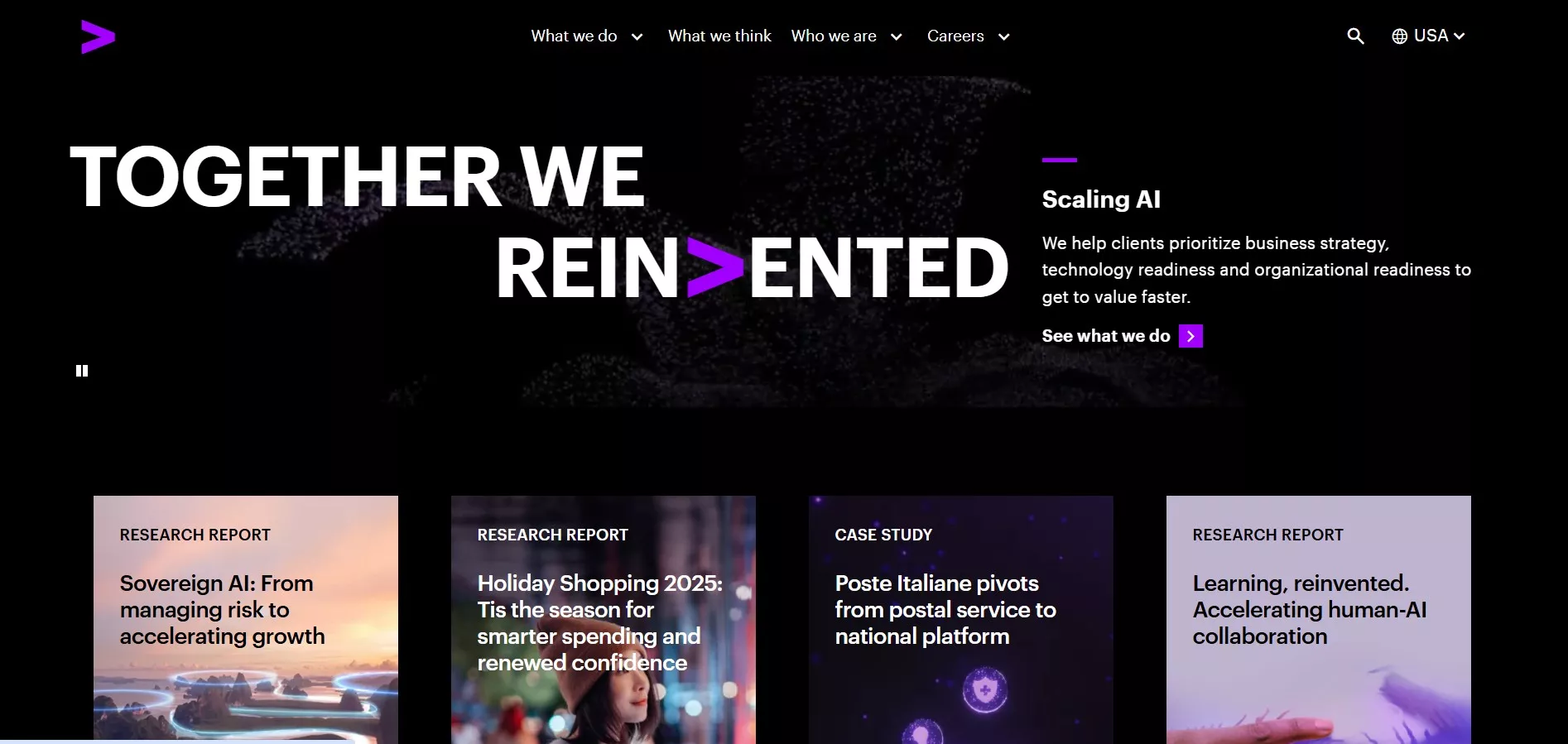
Accenture excels at managing large-scale, complex digital commerce transformations. Multiple business units, geographies, and legacy enterprise systems must align around a unified shopping platform strategy. Their approach balances aggressive innovation timelines with organizational change management. This ensures both commerce technology and people adapt together during digital transformation initiatives.
Strengths
- Enterprise-grade platform architecture designed for scale
- Global talent network for complex commerce implementations
- Proven experience with Fortune 500 online retail transformations
- Change management and organizational alignment expertise
- Performance optimization across large transaction volumes
Integration Depth: Strong across SAP, Oracle, and Salesforce commerce ecosystems. Capable of orchestrating 50+ system integrations across enterprise infrastructure.
Best For: Large enterprises, international expansion strategies, complex legacy system migrations and platform consolidations.
3. Deloitte Digital

Deloitte Digital differentiates through deep customer research and behavioral analysis that informs both strategy and execution. They excel in regulated industries and government contracts where compliance, security, and strategic alignment are non-negotiable. Their teams conduct extensive discovery before coding. This ensures platform architecture aligns with organizational capabilities and customer needs.
Strengths
- Deep customer research and behavioral analysis
- Advanced analytics and data strategy
- Enterprise-grade security and compliance frameworks
- Industry-specific solution templates
- Change management expertise
Integration Depth: Strong in regulated industries, government contracts, and complex compliance requirements.
Best For: Highly regulated sectors, government agencies, organizations needing strategic transformation alongside technology.
4. Capgemini

Capgemini brings deep engineering rigor to enterprise commerce implementations. They particularly excel in complex SAP and Oracle environments. Their structured delivery methodology reduces project risk through predictable timelines and comprehensive quality gates. They’re especially valuable for organizations with significant existing enterprise resource planning investments that need seamless commerce integration.
Strengths
- Advanced ERP and commerce platform integration
- Structured, predictable delivery methodology
- Enterprise resource planning expertise
- Global delivery network
- Reliable long-term support
Integration Depth: Exceptional with SAP and Oracle. Best-in-class for mid-market to enterprise implementations.
Best For: Organizations with existing SAP/Oracle infrastructure, mid-market companies seeking reliable delivery.
5. Cognizant
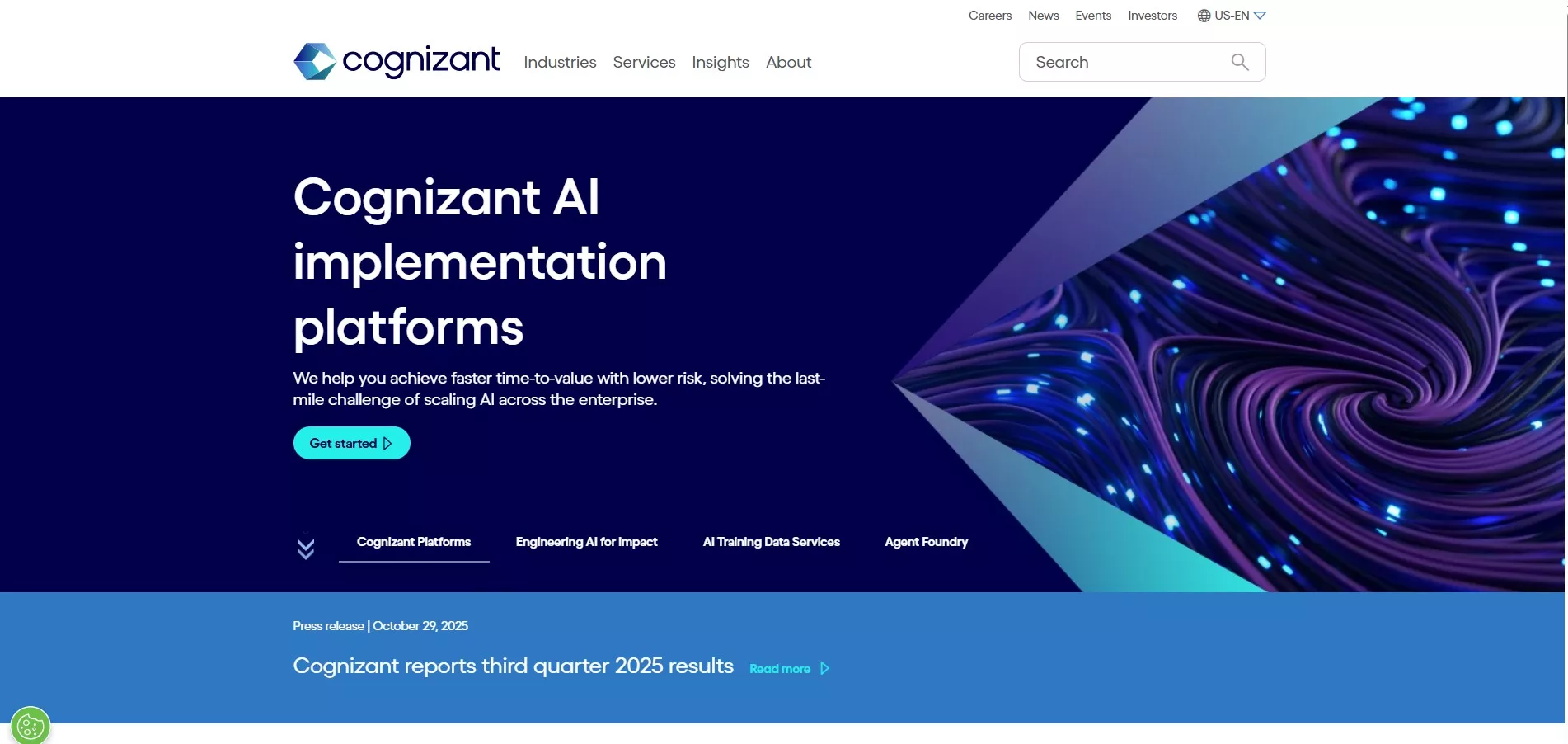
Cognizant excels at modernizing legacy systems while building new capabilities. They balance cost efficiency with engineering excellence. Their scalable delivery model makes them particularly valuable for mid-sized organizations or enterprises modernizing legacy platforms without enterprise-scale budgets. They combine strong technical talent with proven project management discipline.
Strengths
- Cloud-native platform development
- Legacy system modernization expertise
- Scalable delivery model (cost efficiency)
- Strong engineering talent pool
- Rapid technology adoption
Integration Depth: Solid across major platforms. Flexible approach to custom vs. commercial solutions.
Best For: Mid-sized enterprises, organizations modernizing legacy systems, cost-conscious growth.
6. Wipro
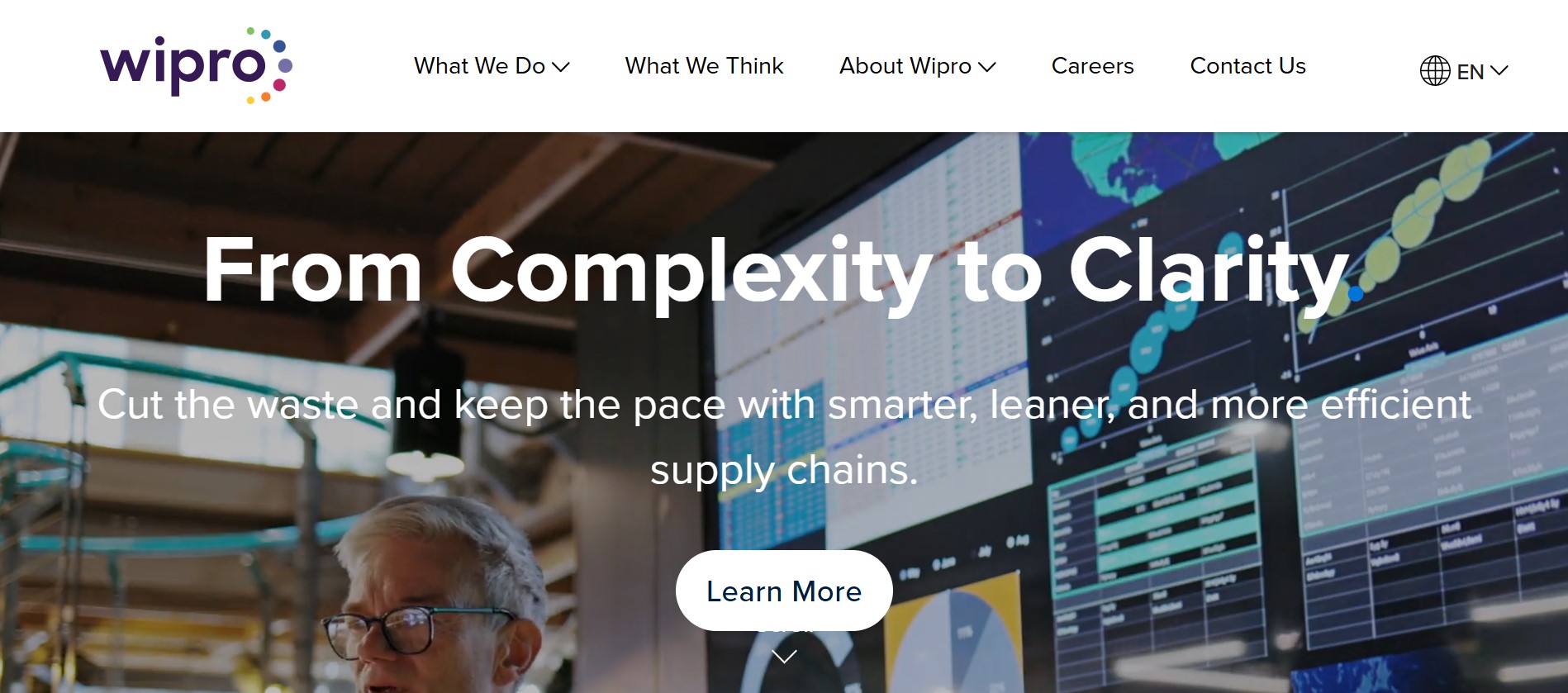
Wipro brings genuine innovation focus to eCommerce development. They particularly excel with AI-driven personalization, automation, and advanced analytics. Their teams stay current with emerging technologies and methodologies. This makes them ideal for organizations prioritizing competitive differentiation through innovation. They combine agile delivery with strong engineering discipline.
Strengths
- AI-enhanced personalization and automation
- Custom platform development
- Performance-optimized architecture
- Global engineering workforce
- Agile delivery methodologies
Integration Depth: Modern API-first approach. Strong with cloud-native and microservices architectures.
Best For: Organizations prioritizing innovation, AI-driven personalization, and rapid iteration.
7. Infosys
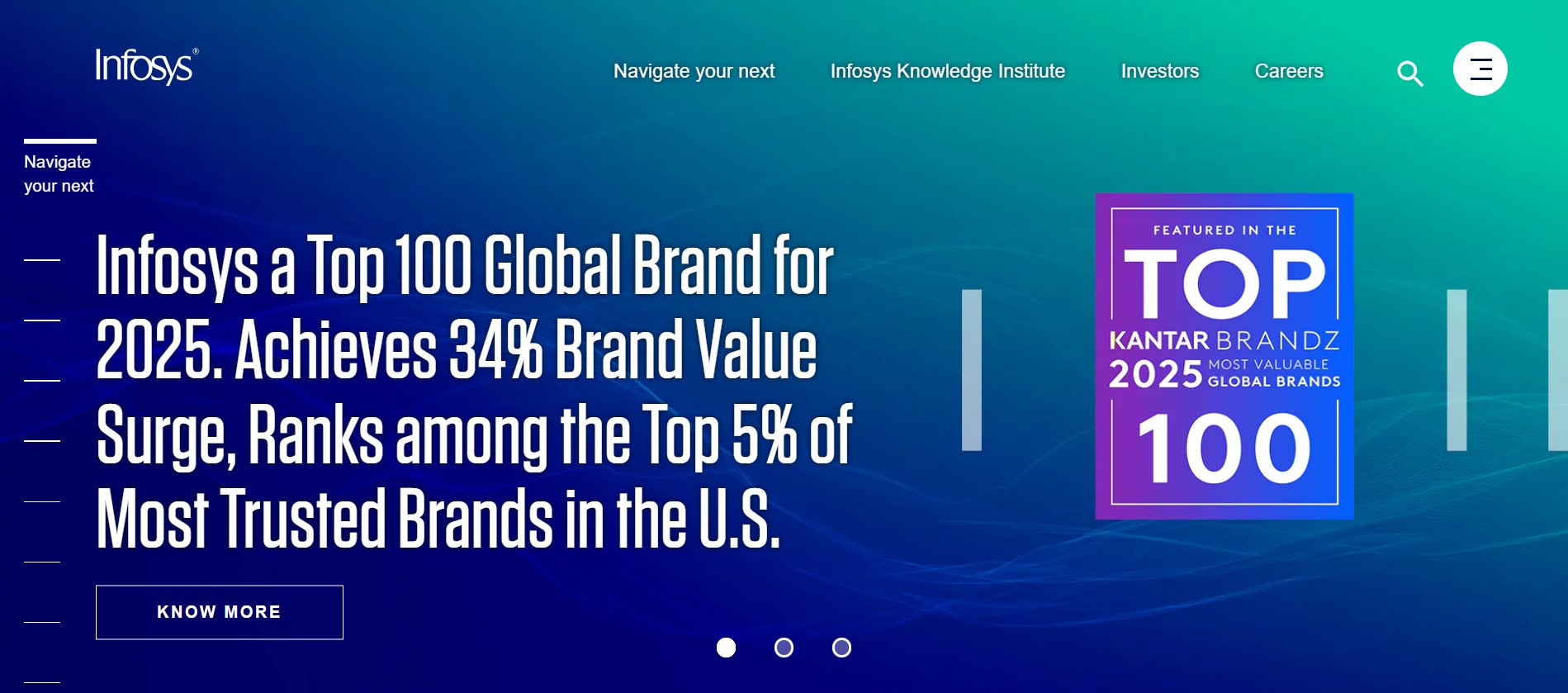
Infosys brings institutional strength and reliability to large-scale eCommerce implementations. Their established digital commerce division combines deep platform expertise with robust delivery processes and comprehensive long-term support. They’re particularly valuable for enterprise organizations prioritizing stability and predictable outcomes over rapid innovation cycles.
Strengths
- Established digital commerce division
- Reliable long-term support and maintenance
- Large-scale team deployment capability
- Structured delivery methodologies
- Enterprise reliability track record
Integration Depth: Deep experience across major commerce platforms, ERP systems, and payment ecosystems.
Best For: Large enterprises and organizations prioritizing stability and long-term support.
8. HCLTech

HCLTech specializes in building high-performance commerce platforms optimized for speed, scalability, and operational efficiency. Their cloud-native expertise and strong DevOps practices ensure platforms run reliably while keeping infrastructure costs under control. They’re ideal for organizations prioritizing performance and rapid time-to-market without premium pricing.
Strengths
- Performance-optimized infrastructure design
- Cloud-native (serverless, containerized) architectures
- Strong DevOps and automation capabilities
- Affordable enterprise delivery
- Rapid time-to-market
Integration Depth: Modern, API-first integration approach. Strong with cloud platforms.
Best For: Organizations seeking high-performance platforms, rapid deployment, and budget-conscious growth.
9. EPAM Systems

EPAM excels when off-the-shelf solutions won’t work. Their product-centric mindset and deep custom development expertise make them ideal for organizations with unique business models, specialized requirements, or complex ecosystem needs. They combine strong user-centric design thinking with high-velocity engineering execution and reliable global delivery processes.
Strengths
- Strong product mindset and user-centric approach
- Deep custom development expertise
- Reliable global delivery systems
- High-velocity engineering
- Complex ecosystem architecture
Integration Depth: Flexible, custom integration approach. Best for non-standard requirements.
Best For: Organizations with unique requirements, marketplace platforms, and highly specialized commerce needs.
10. Publicis Sapient
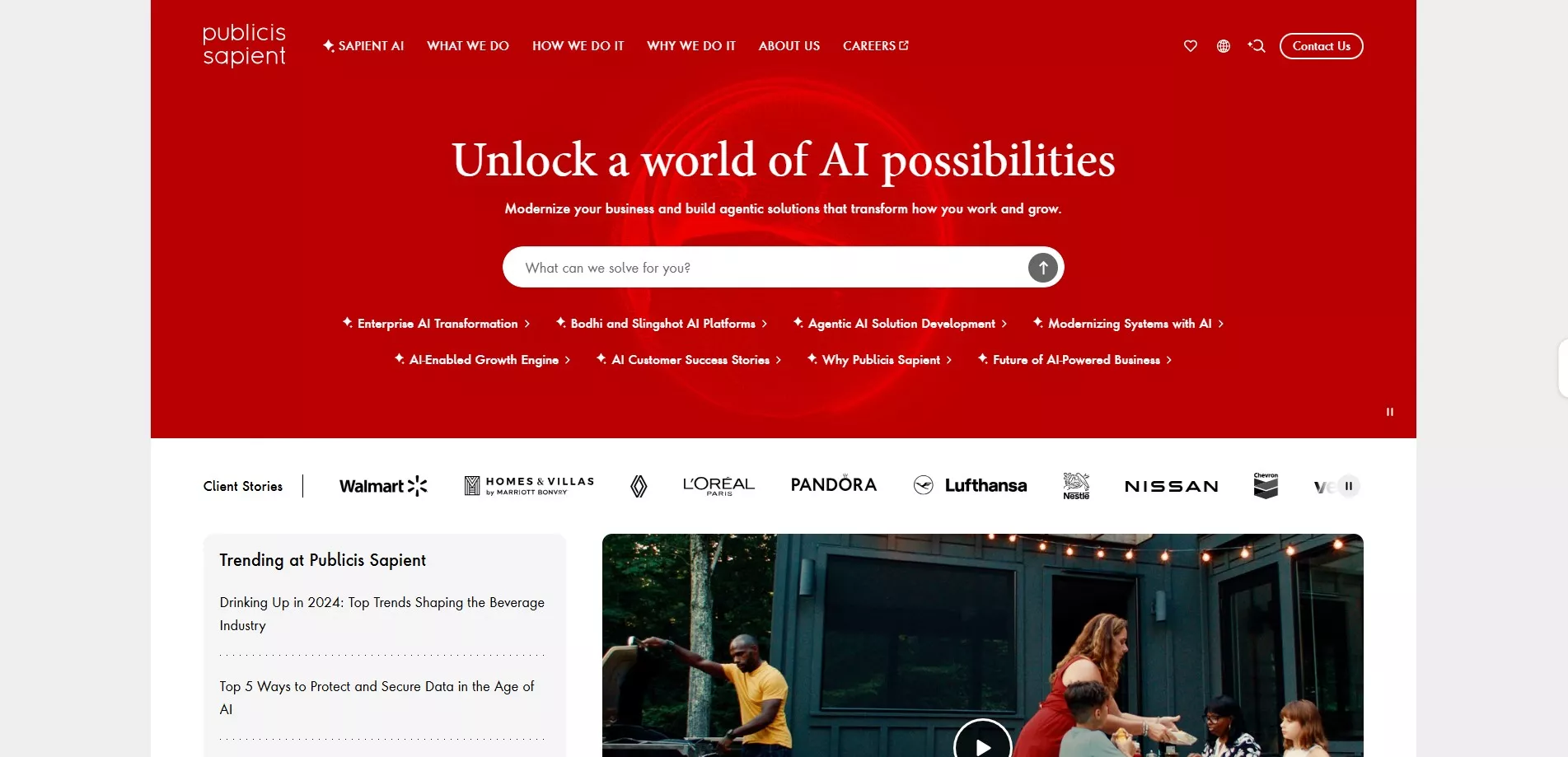
Publicis Sapient brings exceptional design capability and brand storytelling expertise to commerce implementations. Their teams excel at creating differentiated customer experiences that drive engagement and loyalty. They’re particularly strong for B2C market leaders and brands where customer experience and brand expression are competitive weapons.
Strengths
- Exceptional UX/UI design capability
- Advanced commerce engineering
- Multi-channel strategy expertise
- Strong brand storytelling
- Modern customer experience frameworks
Integration Depth: Strong across digital ecosystems, omnichannel platforms, and customer data integration.
Best For: B2C market leaders, multi-channel commerce, and brands prioritizing differentiation through experience.
eCommerce Trends 2026: Key Innovations Shaping Alaska’s Digital Commerce Market
Alaska’s competitive market is shifting. Organizations staying with legacy platforms are losing customers to competitors with modern, responsive experiences.
Six trends are reshaping eCommerce in 2026:
1. AI-Powered Personalization at Scale
What’s happening: Dynamic product recommendations, behavioral targeting, and predictive inventory management are now baseline expectations, not competitive differentiators.
Impact: Organizations implementing advanced personalization report 23-34% improvement in conversion rates and 18-25% increase in average order value.
For Alaska: Personalization matters more in a dispersed market where customer behavior data is precious.
2. Headless Commerce Architecture
What’s happening: Decoupled frontend and backend systems enable rapid deployment across multiple channels. This includes web, custom mobile apps, social commerce, and AR/VR.
Impact: Organizations adopting headless architecture report 40-60% faster time-to-market for new features.
For Alaska: Flexibility to reach customers across channels is critical for seasonal and tourism-driven commerce.
3. Mobile-First and Progressive Web Apps
What’s happening: Mobile commerce now exceeds 70% of eCommerce traffic. Progressive web apps (PWAs) bridge native app functionality with web accessibility.
Impact: Platforms optimized for mobile see 15-30% increase in mobile conversion rates.
For Alaska: Mobile-first is non-negotiable. Many Alaska customers rely on mobile-only connectivity.
4. Cloud-Native Infrastructure
What’s happening: Serverless architectures, auto-scaling infrastructure, and edge computing reduce operational overhead while improving performance.
Impact: Organizations migrating to cloud-native infrastructure report 30-50% improvement in page load speed and 25-40% reduction in infrastructure costs.
For Alaska: Geographic distribution and seasonal spikes require elastic, scalable infrastructure.
5. Subscription and Recurring Revenue Models
What’s happening: Direct-to-consumer brands increasingly adopt subscription models to stabilize revenue and improve customer lifetime value.
Impact: Subscription commerce is growing 15-20% annually. Organizations implementing subscription models see 3-5x improvement in customer lifetime value.
For Alaska: Subscriptions enable predictable revenue from tourism and seasonal customer bases.
6. Composable Commerce (MACH Architecture)
What’s happening: Modular, API-driven architecture enables best-of-breed solution selection for each commerce component. This replaces reliance on monolithic platforms.
Impact: Organizations adopting composable commerce reduce time-to-market, decrease vendor lock-in, and improve agility.
For Alaska: Flexibility to add, remove, or update individual components as market needs evolve.
Essential Questions for Leadership During eCommerce Vendor Selection
Before engaging potential vendors, use this framework to clarify organizational priorities:
Business Goal Alignment
- What are the primary success metrics? (conversion rate, AOV, customer acquisition cost, customer lifetime value)
- What’s the realistic timeline for implementation and ROI?
- How should the platform scale over the next 3-5 years?
- What revenue growth trajectory are we planning?
Technical Architecture Requirements
- What existing enterprise systems require integration? (ERP, CRM, inventory, fulfillment)
- What performance benchmarks must be met? (page load times, uptime SLA, concurrent user capacity)
- Is multi-channel deployment required? (web, mobile app, marketplace, social commerce)
- What data security and compliance requirements apply?
Operational Model and Post-Launch Support
- What ongoing optimization and maintenance is required post-launch?
- What level of vendor support is available? (24/7, business hours, SLA commitments)
- Who owns platform monitoring, updates, and security patches?
- What’s the escalation path for production issues?
Risk Mitigation and Vendor Lock-In
- What happens if the vendor relationship ends?
- How dependent is the platform on proprietary frameworks or infrastructure?
- What’s the data portability strategy if migration becomes necessary?
- Are there contractual escape clauses or exit strategies?
Building Competitive eCommerce Advantage: What Separates Leaders From Followers
Most vendors claim similar capabilities. Distinguishing genuine advantage from marketing claims requires understanding what actually drives results.
Here’s what separates top-quartile eCommerce operations from average performers:
Business-Driven Architecture: Solutions designed around revenue optimization and customer journey efficiency rather than feature complexity. Every architectural decision is validated against business metrics.
Comprehensive Service Integration: End-to-end capabilities spanning strategy, design, development, testing, launch, and ongoing optimization. This eliminates coordination overhead and ensures quality consistency.
Custom Rather Than Template Solutions: Platforms tailored to specific business models, customer segments, and market dynamics. Template solutions optimize for average performance. Custom solutions optimize for your specific competitive advantage.
Transparent, Collaborative Processes: Regular communication, milestone-based visibility, and client involvement throughout the development lifecycle. No surprises at launch.
Rigorous Quality Assurance: Comprehensive testing across devices, browsers, payment gateways, and edge cases before launch. Ongoing performance monitoring and optimization post-launch.
Sustained Partnership Post-Launch: Ongoing support for performance optimization, security updates, feature enhancements, and scaling infrastructure alongside business growth.
Organizations implementing these principles consistently achieve:
- 34-50% improvement in conversion rates
- 40-60% faster time-to-market for new features
- 25-40% reduction in infrastructure costs
- 3-5x improvement in customer lifetime value
Strategic Implementation Roadmap: From eCommerce Vendor Selection to Market Success
Step 1: Define Success Metrics (Week 1-2): Establish measurable success criteria across business, technical, and operational dimensions before vendor conversations begin. Alignment on metrics prevents misalignment downstream.
Step 2: Develop Detailed Vendor Requirements (Week 2-3): Create comprehensive RFP specifications addressing architecture, integration, scalability, timeline, support model, and risk mitigation. Specificity filters out unsuitable vendors early.
Step 3: Evaluate References Rigorously (Week 3-4): Request detailed case studies and client references from vendors. Conduct reference calls focused on:
- Delivery reliability and timeline accuracy
- Post-launch platform performance
- Partnership quality and communication
- Support responsiveness during critical issues
- Actual vs. promised functionality
Step 4: Assess Organizational Fit (Week 4-5): Beyond technical capability, evaluate vendor culture, communication style, and alignment with organizational values. Partnership quality matters as much as technical execution.
Step 5: Plan Transition and Integration (Week 5-6): Clarify vendor responsibilities for data migration, existing system integration, team training, and operational handoff post-launch. Prevent knowledge gaps that create ongoing friction.
Conclusion: Building eCommerce Excellence in Alaska
Your path to dominating Alaska’s digital marketplace is about making a strategic choice, not just a technical one. This guide has equipped you with a clear framework and a detailed look at the top 10 eCommerce development companies to turn that choice into a lasting competitive advantage.
You began this search to solve a critical business problem. Outdated platforms that leak revenue, frustrating customer experiences, and operational inefficiencies that hold you back. The companies profiled here represent your most capable partners in solving these challenges.
But selecting from a list of ten requires a deeper look. Beyond their advertised strengths, the right partner will also help you navigate these often overlooked challenges.
- The integration of AI for dynamic pricing and inventory, not just product recommendations.
- New data privacy laws that will impact how you personalize customer experiences.
- The need for a platform architecture flexible enough to support future B2B or marketplace expansion.
- The hidden cost of vendor lock in that can limit your agility down the road.
- The increasing importance of a unified backend that empowers your operations team.
A key insight from industry leaders is this. The best outcomes come from partnerships, not just projects. Look for a vendor in this top 10 that demonstrates a commitment to your long term business metrics, not just their feature list.
Postponing this decision has a calculable cost. Each month of delay allows competitors to solidify their market position and capture customer loyalty. The revenue and growth you forgo today become increasingly difficult to reclaim tomorrow.
The most successful Alaskan businesses we see use this top 10 list as a starting point for a deeper conversation. They move beyond marketing claims to assess which partner’s culture and long term vision truly aligns with their own.
Your strategic next step is clear. We invite you to leverage this research with a complimentary, no obligation Vendor Fit Assessment. We will help you analyze your specific needs against the strengths of these top companies to identify your two or three strongest potential partners.
The right partnership transforms your digital potential into measurable growth. Let’s schedule a free strategy session.



